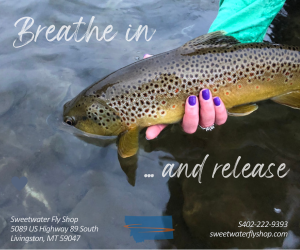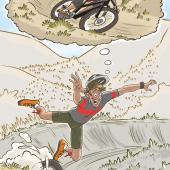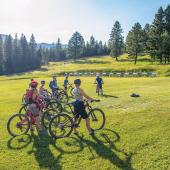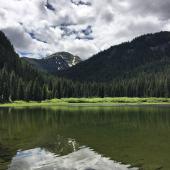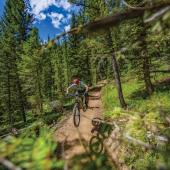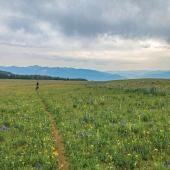Doherty Mountain Trailhead
Learn how a piece of land turns into a trail.
Playing outside is one of the reasons many of us live here, but do you ever wonder how the trails and access to these areas come about? How do new trails begin? Who are the people with visions of what could be? And how do they go about achieving the support and go-ahead for their ideas?
Local mountain biker Tim Hawke is one of those trail visionaries. He recently started down the path of advocating for new trails on Doherty Mountain, located north of Cardwell (view map). With support from the Montana Mountain Bike Alliance (MMBA) and some of the group’s members, Hawke has submitted a proposal to the Butte BLM office to develop a network of approximately 28 miles of shared use, non-motorized trails. These trails would be ideal early- and late-season destinations, since the area receives less rain and snow because it lies in the rain shadow of the Continental Divide. Hawke’s proposal is currently being assessed by the BLM, and they are accepting letters and comments on the idea until February 15.
The Doherty Mountain proposal came about in part due to a relationship that Hawke developed with the BLM while he was involved with the Friends of Pipestone. In addition, Hawke had been scouting for potential areas to develop new trails that would be ideal for early- and late-season riding, and he found one great location on BLM land near Radersburg called Lone Mountain. He had hopes of creating a non-motorized technical rocky trail for biking, hiking, and running in the area. But while BLM liked his proposal, they told Hawke that they couldn’t even consider it until they redid the environmental assessment for that section, scheduled for 2017.
It’s thanks to Hawke’s relationship with the BLM and his activism on the Lone Mountain trail that the BLM contacted him again, to see if there were any areas within the Jefferson County section that he was interested in pursuing when that came up for environmental assessment. Hawke immediately thought of Doherty Mountain just north of the interstate, right before the drop down into Cardwell. With only a month to write up a proposal, he went out and walked the area in question with MMBA board member Greg Beardslee, scouted out potential lines, perused Google Earth maps, and contacted the Golden Sunlight Mine. The mine owns the property adjacent to the BLM land at the bottom of the hill called Candle Stick Ranch; the area is near existing roadbeds, so it makes the most sense to put in the trailheads there. The mine supports the idea of non-motorized trails to benefit the Whitehall community, and has even offered to match grant money for the project.
Hawke presented his proposal to the Community Advisory Committee (CTAC) and other associations in Whitehall, outlining the possibilities of a trail system that all non-motorized user groups would share. The CTAC likes the idea, as they are tasked with finding ways to sustain the economy of Whitehall for the eventual closure of the mine. The proposal was received with lots of enthusiasm and with offers from different groups to help with the funding of the trail development if it passes. One main concern is how to keep the area to strictly non-motorized use; the other is soil erosion. Excitement for the proposed trail system abounds, as it has the potential to bring in recreational money to the community of Whitehall. If Hawke’s idea gets approved, the BLM hopes to start working on the trails (view map) later this year. They are currently reviewing the proposal and accepting comments until February 15. Please consider writing a letter of support; you can find directions and discussion points here.





